|
Do you use the Danielson Framework for Teaching? This framework can be a great guide for teachers who want to improve. It's also commonly used in teacher evaluations--making it a bit intimidating and overwhelming. One of the greatest issues teachers have is incorporating student discussion and inquiry. What if you're teaching a phonics lesson using direct, explicit, systematic instruction, for example?
I personally have found a way to "marry" inquiry with phonics (and most things I teach). I'm happy to share my Structured Inquiry Lesson Planning Framework™ video. In the first half, I explain the steps. In the second half, you'll see how the steps correlate with the Danielson Framework. (I've pointed out the standards that aren't covered and explained how to get to these as well!) Someone asked what made me create this video. Here's the long-ish story. I had a lot of training in inquiry as a beginning teacher 24 years ago. Through inquiry lessons with my students, I learned patterns in the English language, a.k.a., phonics! I originally created songs based on my students' suggestions, and later refined them after doing a pilot study with 80 teachers and 1500 students in South Bay Union School District. The next step toward this video was my own classroom observations. I was being "graded" based on the Danielson framework, so I basically designed lesson plans to meet each objective. Finally, I'm currently giving a class on phonological awareness and phonics instruction for Hawaii's Department of Education. Teachers will be writing lesson plans based on all that they learn, with alignments to the Danielson Framework. The first version of this video was created to help them experience success in their lessons. Why is using students' suggestions so important? If we teach to a curriculum, we don't really know what our students need. The question, "What do you notice?" is so powerful because all children will answer at their individual levels--with basic to advanced levels of understanding, and often with misconceptions. It's a great way to find out how to modify our lessons to truly meet their needs. What about my direct, explicit, systematic phonics lessons? Research indicates that many students benefit from direct, explicit, and systematic instruction. However, there is no clear defined "amount" or way that concepts should be broken down. Therefore, it's important to know what our students know in order to truly differentiate instruction to meet all of their needs. After all, we're not teaching a curriculum...We're teaching students! This inquiry process is behind the creation of many of my songs. Most contain a range of information, and they're designed to be played daily. The goal is for children to review, learn, and preview information related to a topic in each 2-minute mini-lesson. My songs are also designed to meet the needs of the range of students in a typical classroom. If you ask students, "What do you notice," children will answer based on their personal learning levels. As they listen to other students, they have opportunities to make additional observations. For instance, the ABC chant covers all letters and sounds. Children may notice other letters that they have studied, point out new letters, and make mistakes as they incorrectly name letters. Advanced students may notice that "apple" has an "le" or that the letters "oa" make the long "o" sound in "goat." The whole class will benefit from hearing students' insights along with clarifications. Within a school year, individual students will become more and more observant and notice more interesting word patterns in each song. I tell my students, "You should learn something new every time you sing!" Was this video helpful to you? What questions do you have? Please comment below! I will be creating some sample lessons with details of how exactly the Structured Inquiry Lesson Planning Framework can work. I'd love to hear your thoughts as I work on this project. Also: You may like the 26-minute Mathematical Practices video that I created, below. It gives very specific ways to easily incorporate all Standards for Mathematical Practice into your lessons and observations. While the video cover says it's for grades K-2, the process can really be used for K-12. Enjoy!
0 Comments
What's in a Song?In this song, your children will learn about the 3 sounds that "ed" makes at the end of words. Normally, this may be too much information for a 2-minute lesson. However, MORE learning is possible with MUSIC!
My goal in creating many of my songs is to include complete information about a subject. Suppose you are studying the /ed/ sound of "ed."
***This is one of 25 videos on my NEW Advanced Phonics music video set. Please head HERE! ***Are you interested in learning MORE about how to use songs to make phonics instruction more effective and fun? I'd love to hear from you!
I'm so excited for a NEW development in my EduTunes journey. I am working with Heidi Butkus, and my songs will be included in her "HeidiSongs" website. We believe our songs are complementary. When used together, we can provide a greater teaching and learning experience for you and your children.
In the video above, I've included an example that uses Science of Reading research-based concepts to teach sight words. The latest research indicates that sight words are best taught in terms of phonics. For example, in the word "has," two letters (h-a) can be sounded out using basic phonics skills. Two-thirds of this word makes sense if you know basic letters and sounds, while only 1/3 of the word "doesn't follow rules." What if we consider that "s says /z/" is a legitimate spelling pattern, rather than an exception to a rule? Children can add "s says /z/" to their repertoire of phonics patterns, so that 100% of the word now "makes sense." Children can apply the new rule or pattern to a variety words, such as "is," "as," and "his." These are no longer "sight words"--they're just words that follow (new) known patterns. I've made a video using two songs to show the power of music to teach this concept. I've transcribed most of it below in case you'd rather read about it. In Heidi's song "Has," she sings, "First you make an 'h' and then an 'a' and then an 's,' and that is has, has, has. There is no z." Very young children and struggling readers will be motivated to sing and dance with the actors as they learn new words. Let's talk about how to expand on reading with this song. Ask kids, "What do you notice about this song?" Heidi already gave them an idea. A student might say, "I sound out h-a-s. It seems like the 's' should be a 'z.'" Now, you've used the inquiry process to set the stage for a discussion of skills: Sounding out words and learning that s says /z/. Heidi and I both have songs about sounding out words in our phonics sets. Let's focus on the observation that "s says /z/." Ask children if they can think of any other words that follow this pattern. In my song, I say, "S says /z/ at the end of some words: Is, as, his, has, s says /z/." Now kids see four examples of a common pattern in the language. Kids learn from repetition. Depending on your students' needs, you may want to focus on one word or play the sight words songs for "Is," "As," "His," and "Has" daily. Then, follow up with "S Says /z/." I hope you see why Heidi and I make a great team. Ask simple questions like, "What do you notice?" at the end of our songs to promote inquiry. In this example, students' ideas help the whole class to learn to sound out words, and to find a new pattern in the language. In any song, asking "What do you notice?" will lead the whole class to higher levels of learning. Thank you! Please head to the HeidiSongs site to get ALL of my videos, plus Heidi's, for FREE for 30 days!!! Heidi's "Has" song is available on site word sets, and "Has" is in my Early Phonics and monthly sets for grades 1-2. I hope this song can make a difference for you and your children during this crazy time. This song will teach your children to scrub for a long time--on top of their hands, between their fingers, and underneath their fingernails. I've included two versions below. The first one focuses on the words. Encourage children to read as they sing. The second version shows "Miss Jenny" (me) doing the motions. Encourage children to act out the song as it plays to make washing hands memorable and fun. If you're not sure how to create motions, just keep scrubbing your hands together. HERE is a link to an alternative video in which I danced with the motions about 10 years ago! "Wash Your Hands" Version 1: Read!***This video is also available commercial-free on my "Start the Day With a Smile" video set, available HERE.
***Try all my music videos FREE for 30 days, at HeidiSongs! Heidi and I have teamed up to give you nearly 1,000 videos that teach all subjects through music. You'll see my music sets throughout the site, with my entire catalog at the bottom.
I hope you enjoy "Making 11-20." Children learn three ways to demonstrate the base 10 system. When you sing, use different teaching strategies. At first, just watch and learn. Later, invite students to hold up their hands with partners to make the numbers. Students can also write down numbers on white boards. Other times, they can move base 10 blocks as the song plays. This song is one of over 30 videos from the kindergarten and first grade math video sets. (Note that you can now try all my music videos FREE for 30 days, at HeidiSongs! Heidi and I have teamed up to give you nearly 1,000 videos that teach all subjects through music. You'll see my music sets throughout the site, with my entire catalog at the bottom.)
Here are some more ideas for making a variety of music videos work for you: 1. "Coview" videos with children. According to the “Early Learning and Educational Technology Policy Brief” developed by the U.S. Department of Health and Human Services (2016), coviewing means not only watching videos with children—but also creating learning opportunities before, during, and after viewing them. 2. Discuss viewing behaviors. Decide on behaviors that make sense for your class, depending on the song. I've described ideas for "Making 11-20" above. You could ask students to vote on which option to choose each time you sing. Note that small changes in expectations can result in big behavioral changes. For instance, if students are playing with manipulatives instead of showing song concepts, consider asking them to watch and read with their hands in their laps next time. Practice with manipulatives before singing another time, so that children know exactly what to do before trying again. 3. Choose a focus. I often include everything there is to know about a topic in a video. For instance, I've incorporated three ways to show numbers here. The idea is that children should learn something new each time they sing. Choose a focus, or simply ask children to find something new that they notice before the video plays. After the video, you will have the opportunity to do a mini-formative assessment as children share discoveries, misconceptions, and questions. 4. Connect to real-world situations. Whether children are reading, solving math problems, or engaging in STEM activities, connect to related content from videos. Connecting to song content can help students to perform real-world activities. In addition, they are more likely to recall the activity whenever they later review the video. 5. Ask children to point to the words. Pointing to words has been a huge incentive for my students. They can point to words in videos or lyric pages that you project. You can purchase a fun pointer, or just use a meter stick. I’ve found that when I say, “If you’re really focusing on learning something new, you may have a chance to point to words on the next song,” children become much more focused. You may be surprised that some of your lowest pre-readers will successfully point to words. It turns out that musical intelligence is the first of Howard Gardner's multiple intelligences to develop in young minds. Children internalize the rhythm of music as they find the words. 6. Use lyric sheets. Think of videos as a mix between modeled reading and shared reading. When children point to lyric sheets as they video plays, they are now moving between shared reading and independent reading. You may want to use lyric sheets in whole-group, small-group, partner, or independent reading time, with or without the music. 7. Create student-centered rubrics. Songs are a great starting point for student-centered rubrics. After singing, ask children what they should know about a topic. For instance, in the song “Making 11-20,” students may say:
Perhaps you had a rubric in mind before introducing the song. As a teacher, I let my children know that I value their ideas--and I contribute as the editor. Sometimes, the class comes up with my ideas or I end up modifying ideas a little bit to fit my our needs. To be honest, I'm often happily surprised when their new, fresh, child-centered ideas help to mold my original thoughts into something better! Reference
King, J., Doggett, L., South, J., Burwell, S., Smith, L., and Rudisill, S. (2016). “Early Learning and Educational Technology Policy Brief.” Office of Educational Technology. Retrieved from https://tech.ed.gov/earlylearning/.
Who Remembers the "ABC" Song?
Everyone! Of course, this song is ingrained in our brains. If the traditional alphabet song has been so powerful in our lives, why not multiply its effects by 350? That's what I've tried to do with my music. Today, I'd like to share a chant called "ABC Fun" that introduces (or reviews) each letter, sound, and example in two minutes. It's part of my Early Reading and Phonics Time sets. Feel free to use it every single day in your classroom!
Research Basis
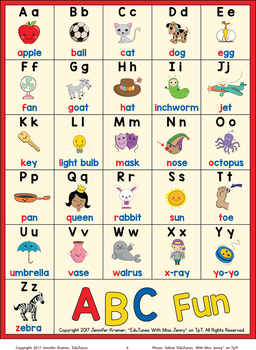
Ways to Use the ABC Chant
You can do several things to maximize learning in your classroom:
Start the Day With a Smile!
Is there a better way to start the day than smiling first thing every morning? How about smiling and singing? This song will get your class smiling, singing, reading, and learning to say "good morning" in four different languages first thing each day. I hope you can use it every single morning when you teach.
Research on EduTunes: How smiling and singing will help your kids learn MORE!
I hope you see that this song is fun and motivational, but will it help your students learn? YES! First, I'd like to share some research about my songs with you. Ayfer Kokabas published a paper called "Using songs in mathematics instruction: A pilot application." She found that children enjoyed learning more when they sang Edutunes math songs--and their achievement increased significantly. She concluded that decreased anxiety and increased positive attitudes contributed to the higher scores. While she did not study this song directly, you can see that a motivational morning song can help children to start the day with a positive mindset.
Visible Learning: More research-based strategies on promoting learning
Visible Learning: A Synthesis of Over 800 Meta-Analyses Relating to Achievement is the title of a book by John Hattie. It has been described as the most comprehensive analysis to date of studies on how children learn. Hattie analyzed over 800 meta-analyses, which together studied over 240 million students, and he then ordered 138 strategies in terms of learning effectiveness. Below are three of the most effective researched strategies--and how "Start the Day With a Smile" fits in.
Visible Learning Strategy 1: "Teacher-student relationships"
According to John Hattie, establishing positive teacher-student relationships is the #11 most powerful "Visible Learning" strategy. The FIRST thing I do each morning is stand at my door and say "Good morning" to my children in any language they choose. I teach them to look at me, choose a way to say "good morning," and wait for my response before entering class. They can choose from one of the four languages used in the song--or they may greet me in another language. In this way, we connect and foster a relationship as they enter the classroom. Next, we sing this song. My students took a poll about their thoughts on this routine. They overwhelmingly said this procedure made them happy to be in school. Try it--and ask your children what they think as your own mini-research project.
Visible Learning Strategy 2: "Classroom behavioral"
Hattie uses the term "Classroom behavioral" to refer to studies indicating that classroom behavior is the #6 factor in influencing learning. How can this song affect classroom behavior? It helps to:
Visible Learning Strategy 3: "Repeated reading programs"
Repeated reading is the #16 most effective "Visible Learning" strategy for promoting student success. All of my songs can be used as part of your reading program. When I first started writing songs for kids, I wrote all words on large posters. Children would take turns using a pointer to point to words as we sang. Next, I started photocopying pages with words. Children would point to their own papers as they sang. Later, I made the videos. They are great for modeling reading to students. I also sometimes project words onto the whiteboard. I feel that all these strategies are complementary ways to promote reading--so I recommend using them all.
More!
Additional research indicates that songs promote learning. Songs help with relaxation and stress management. They also promote brain wave activation and fostering creativity. They are a vehicle for both conscious and subconscious information transmission. In addition, you can see that this song promotes four of Gardner's Multiple Intelligences:
I truly hope my songs make a difference in your classroom. I'd love to hear your feedback! Please note: You can now try all my music videos FREE for 30 days, at HeidiSongs! Heidi and I have teamed up to give you nearly 1,000 videos that teach all subjects through music. You'll see my music sets throughout the site, with my entire catalog at the bottom. Thanks, "Miss Jenny" |
Welcome!Thanks for reading my blog. I'm excited to help you to incorporate evidence-based practices in your classroom or home. Archives
April 2021
Categories |
EduTunes Website: Copyright 2018 Jennifer Fixman Kramer. All Rights Reserved.
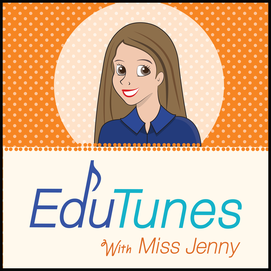
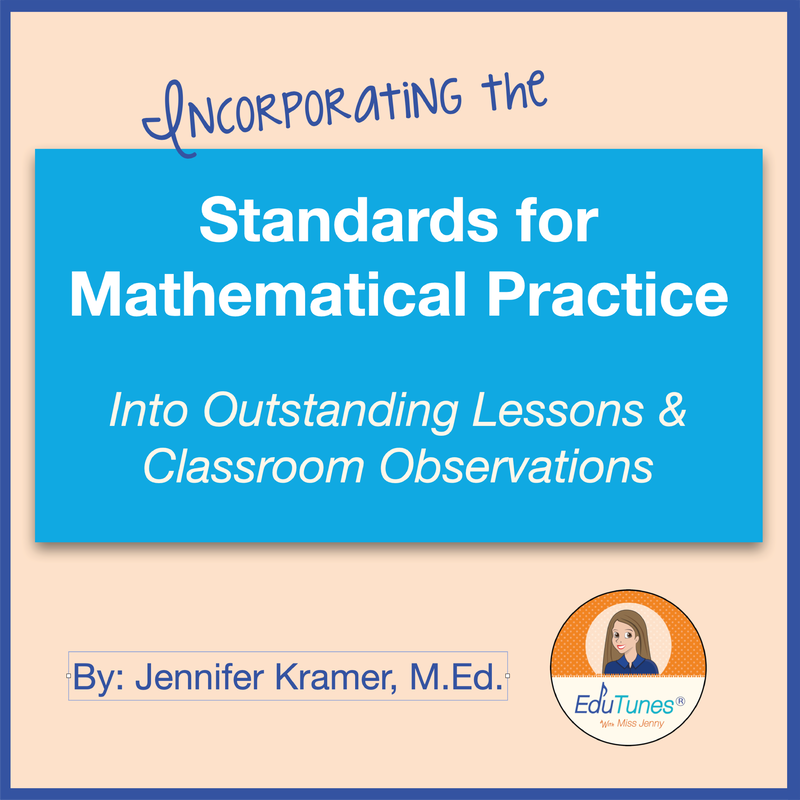
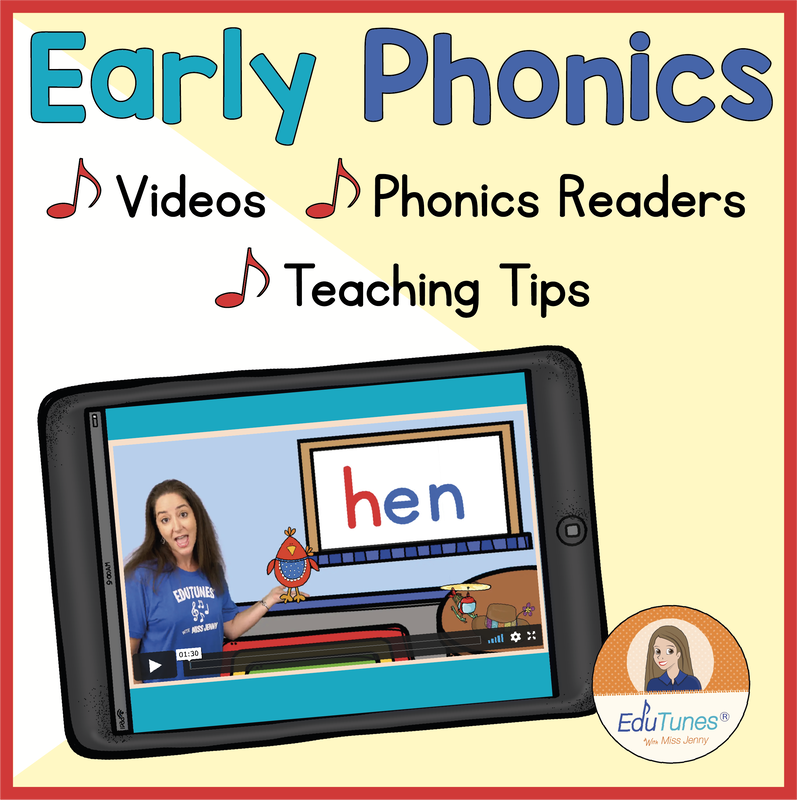
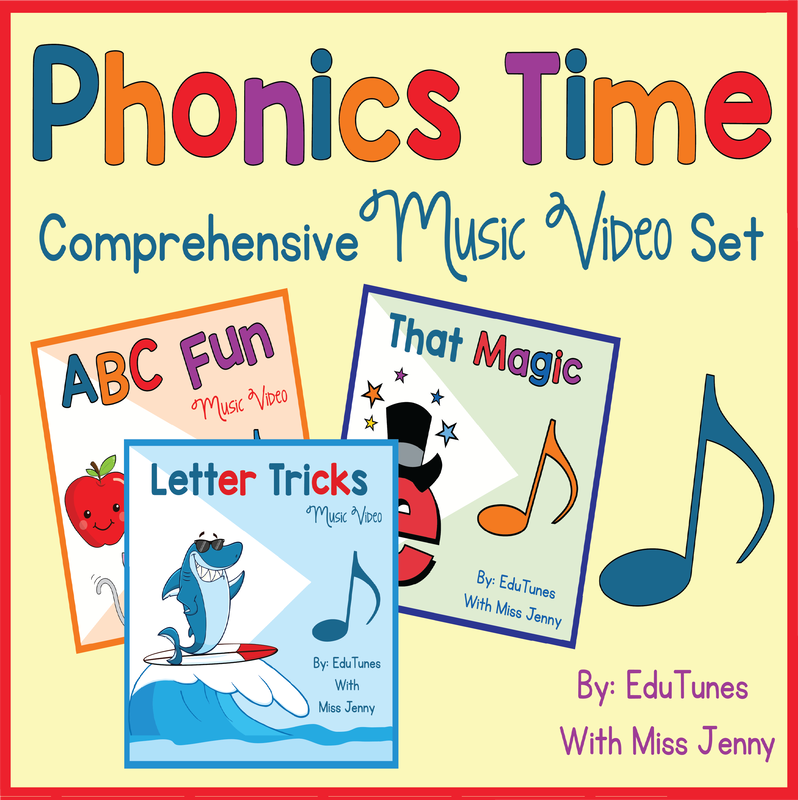
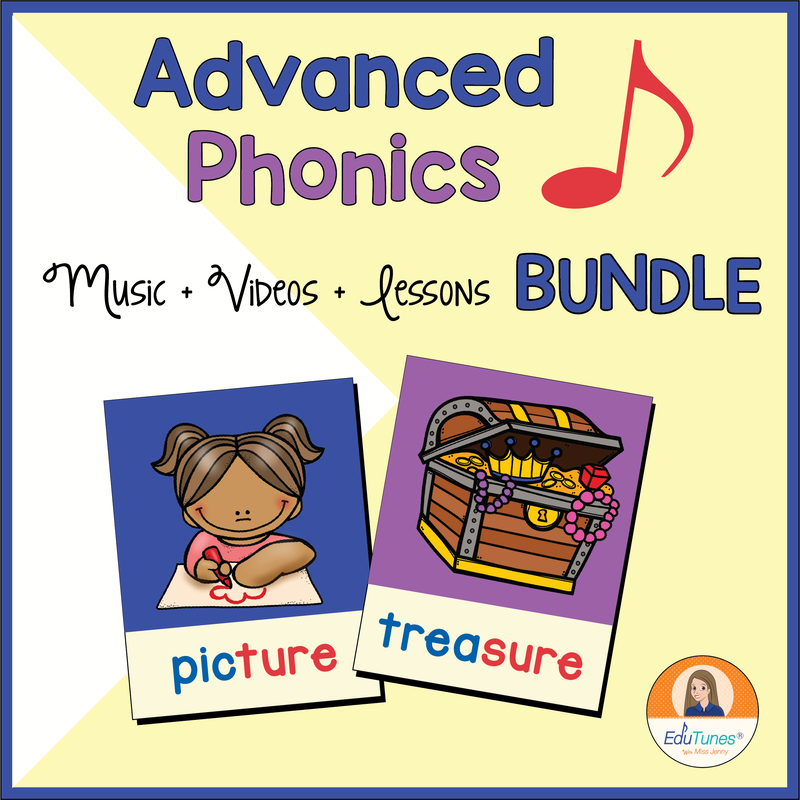
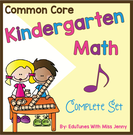
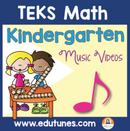
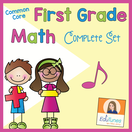
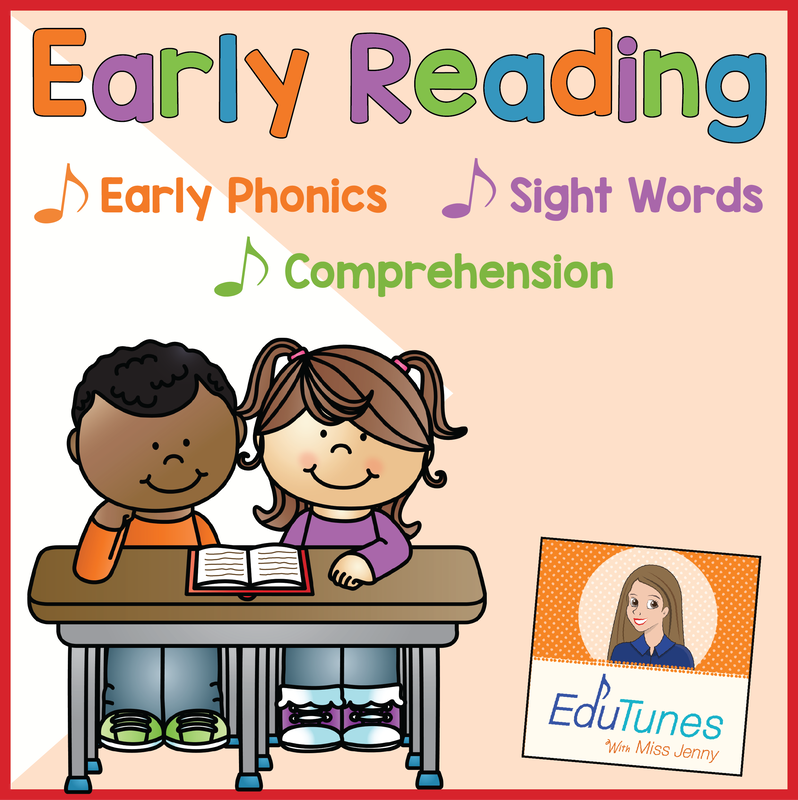
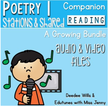
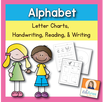
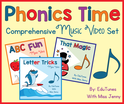
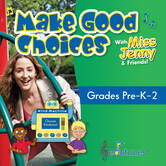
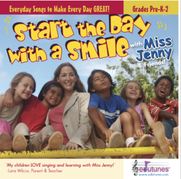
 RSS Feed
RSS Feed
